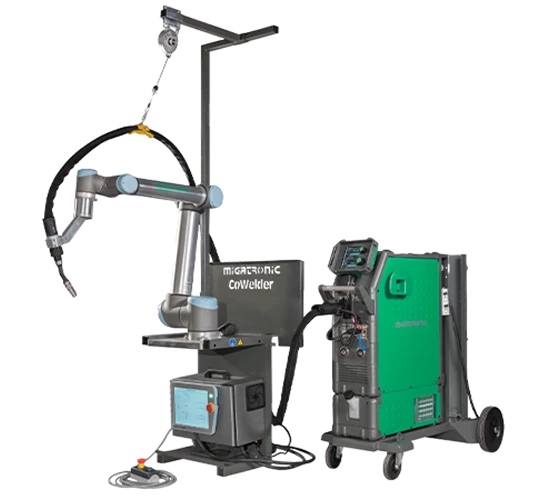Using robots to address the welder shortage
Automated welding solutions are used across a range of industries, most commonly observed in the automotive industry where arc welding has been automated since the 1960s as a reliable method of manufacturing that increases accuracy, safety and efficiency.
The primary driver of automated welding solutions has always been a desire for reduced long term costs, increased reliability and productivity.
However, now there is a new driving force as robots are being used as a way of addressing the skills gap in the welding industry. More experienced welders are retiring in large numbers and there aren’t enough certified welders being trained to replace them.
The American Welding Society (AWS) estimates there will be a shortage of nearly 400,000 welding operators in the industry by 2024. Robotic welding is providing one of the solutions to address this shortage.
New Robotic Welding Machines

Robotic welding machines such as a Cobot welder can be certified by a welding inspector. This means the machine will go through exactly the same testing and inspection as any person looking to achieve certification.
Companies that can offer robotic welders will have a large up-front cost to buy the robot, but after that they have no ongoing wages to pay. Other industries can rent the robot for an hourly fee and there can be less additional costs or risks associated with it.
What does this mean for human welders?
The ability to have automated welding processes allows humans and robots to work side by side to better meet the requirements of businesses.
John Ward from Kings of Welding explained: “We’re seeing more and more welding companies have to turn away business because of labor shortages.
“Welding automation isn’t a case of replacing staff with robots, it’s a crucial step in fulfilling the demand of industries. Large jobs in manufacturing or construction that require multiple welders to operate sometimes have to wait weeks or months to find the availability of a large group of certified welders.”
In fact, with robots, companies have the ability to more effectively allocate their resources to achieve the best outcome.
More experienced welders can handle the more challenging, higher value welds and the robots can handle the basic welds that don’t require much programming to achieve.
Professional welders will typically have more flexibility than a machine to adapt to different environments, whereas robots will achieve reliable results on set parameters.
A growing industry
The robotic welding industry has been projected to grow from 8.7 percent in 2019 to 2026. Automotive and transportation industries are projected to grow the most with an increased demand for vehicle manufacturing in emerging economies and electric vehicles being the two driving forces.
Welding robots are expected to be a crucial element in ensuring the fulfillment speed and reliability in product manufacturing.
Asia-Pacific accounts for the highest rate of growth. China and India being the two focal countries, who have both benefited from government schemes ‘Make in India’ and ‘Made in China 2025,’ which require welding as a key element of manufacturing.
This all comes as good news for robotic automated welding companies and it offers an amazing opportunity for businesses in this space.

